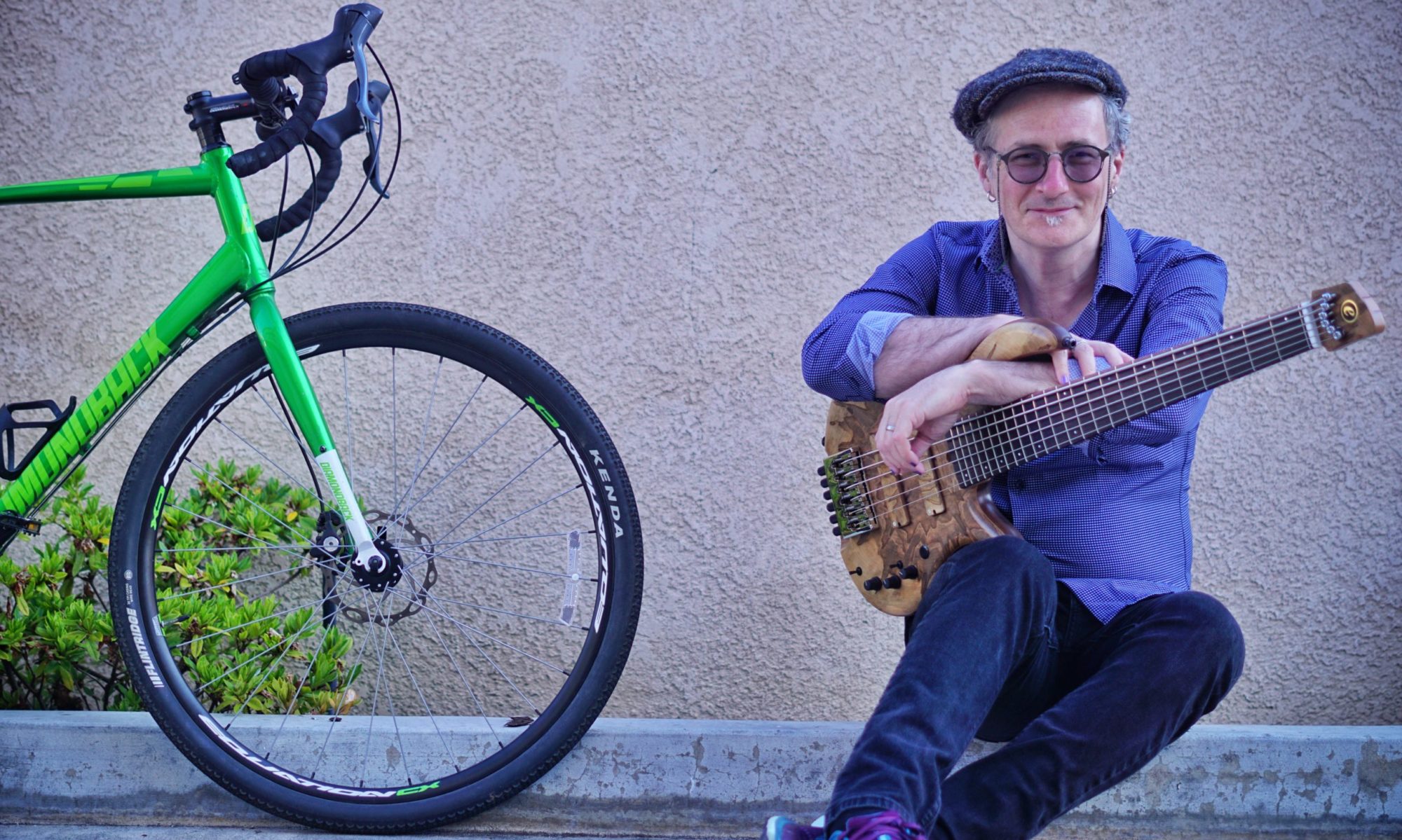The “…2.0” suffix is being widely used to denote a significant leap forward from the first version of something, inspired by the description of changes in the way the web is used and perceived as ‘Web 2.0’. So we now have Media 2.0, Music 2.0 etc… It’s quite a useful shorthand, if a little nebulous, but it did make me wonder if it would work as a way of describing what I’m up to musically – Bass 2.0 – Bass 1.0 being the use of instruments within the bass family as defined by their role as ‘the bass’ within the music, and then the extensions on from that (taking that role and expanding on it, making it more twiddly, but still sitting well within the tradition of what’s expected of a bass instrument.)
Bass 2.0, as I see it, is where the role becomes something entirely separate from the instrument.
Q: What makes the bass an instrument distinct from the guitar, and why is that important?
The instrument is defined by it’s place within the lineage of bass guitar luthiery, the descendants of Leo Fender’s Precision and Jazz, which set the parameters for scale length and string spacing in place, no matter how many strings. String spacing can be tighter or wider, and scale length moves around, but even then it’s defined by it’s relation to the standard – short scale, long scale, etc.
So it’s a different family of instruments, originally designed with a particular role in mind, but now designed to be more of a blank slate, maximising the tone-shaping potential via electronics, and accentuating certain resonant characteristics via advanced building methods.
For quite a while, people playing bass as a solo or melody instrument did so very much within the lineage of the role – there was a continuum between what bass guitarists (instrumentalists) did as ‘bass players’ (music functionalists) – even Jaco stayed largely in that world, in that there’s very little of what he did that is unrecognisable as a bass as we know it (though I can’t even begin to imagine what it must’ve been like to hear ‘Portrait Of Tracey’ when his self-titled debut first came out…!)
The first person that I’m aware of to really take a ‘Bass 2.0’ approach to the instrument was Michael Manring – the redesign of the basic properties of the instrument that he and Joe Zon did to create the hyperbass have yet to be surpassed or even matched in terms of what possible in extending the possibilities of the 4 string bass (interesting the the most radical bass design ever is still a 4-string.)
There’s some stuff on his album ‘Drastic Measures’ that hints at what’s possible, but it’s his next three solo albums – Thonk, Book Of Flame and Soliloquy – that as a trilogy set the standard for Bass 2.0 – music conceived from the mind of someone who is very much a bassist, but who uses the instrument as a tool to create incredible music, rather than turning ‘bass playing’ into a circus trick or parlour game by just doing the same old shit faster and twiddlier than anyone else.
Where does my music fit into this? Well, i was deeply influenced by Michael’s ideas, even before I’d ever heard him, and took ‘Thonk’ as a green light to move away from the slapping and tapping I’d been doing before (even though there’s loads of slapping and tapping on Thonk) and do my own thing. It was a few years before I played a solo show, but as I’ve mentioned here before, the concept for my solo music was in place by the time I did my first gig (the track ‘Chance’ on And Nothing But The Bass is taken from that very first gig.)
And I’ve been trying to build on that ever since, holding in juxtaposition my love of the bass, it’s history, it’s place in the last 50 years of popular music with my desire to make the music i hear in my head. Tellingly, very few of my influences are bassists, because it’s always been about music first. Most of the ideas I take from bassists are physical ideas rather than compositional or emotional ones – the stuff that really counts.
And of course, within Bass 2.0 there’s an even deeper understanding of what the bass does when it’s being ‘the bass’ – I talk about this a lot when I’m doing looping masterclasses etc. – when I started playing solo, there was a fear projected onto me by some ‘older and wiser’ musicians who suggested that it would spoil my ‘normal’ playing, that I’d lose the joy of playing simple lines because i’d always be wanting to take solos and play melodies. In reality that couldn’t be further from the truth – because i spend my days thinking in layers, I’m happier than ever to just be one of those layers, to play the simple bass parts that hold everything else together. I haven’t had that many chances to do it of late, which made last night’s gig with John Lester at the 606 all the more frustrating, as I couldn’t hear John’s guitar at all, so wasn’t able to play with the level of confidence that his music really needs. It wasn’t rubbish by any stretch, just not as on it as it should’ve been… Shame, cos the rest of the gig was amazing.
Anyway, so, Bass 2.0 seems to be a nice way of categorising a desire to take the bass instrument to new places musically – there are certain tonal things that the physical size, shape and string length of the instrument allow that mean that even things that ‘sound like guitar’ or ‘sound like a synth’ have a unique quality to them…
